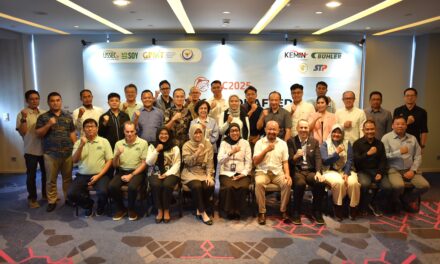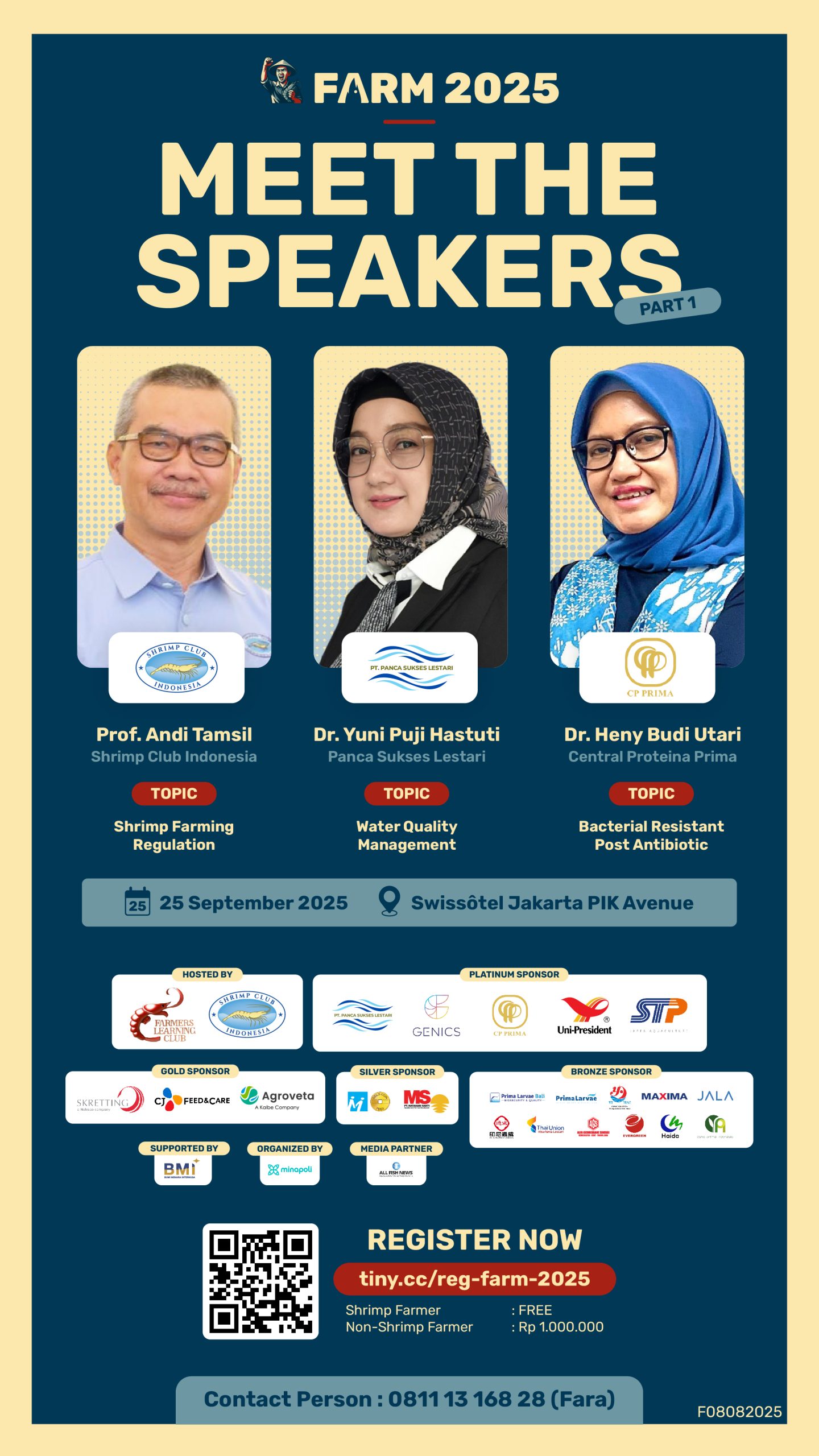Maggot originating from BSF (Black Soldier Fly) is growing as a potential new source of protein for feed, including fish and shrimp feed. Maggot meal is predicted to replace or complete fish meal, which has been a primary protein source in feed.
“I think this (maggot) is the future ingredient. Because we look that fish meal and oil will be not sustainable anymore,” Erwin Suwendi, Head of Nutrition and Feed Technology at PT. Suri Tani Pemuka (Japfa Group), stated during a seminar on “Exploring the potential of maggots for sustainable feed,” held by Agrina as part of the ILDEX 2023 event at ICE BSD recently.
Erwin finds the development of protein from maggots intriguing because their use doesn’t significantly compete with human needs. Additionally, maggots have a decent nutritional profile, particularly in protein and fat content. The protein content in maggots varies depending on production methods, substrate used, rearing duration, and harvesting processes. However, on average, maggot protein content is around 45 percent.
Furthermore, the fat content is quite distinctive. Erwin mentioned, “Its (maggot) oil content is largely composed of carbon C12, or lauric acid. Lauric acid acts as an immune stimulant or possesses antimicrobial properties.”
Challenges in deploying maggots for feed
Despite having relatively high protein, maggot quality, especially in its amino acid profile, doesn’t match fish meal, especially in amino acids like lysine and methionine. At a protein content of 45 percent, maggot lysine and methionine content are approximately 2.7 and 0.8, respectively.
Read more: Probiotic strategies for managing Vibrio in shrimp farming
“When we compared to local fish meal, for instance, with 60 percent protein, the lysine is around 4.5, and methionine might be twice as much, around 1.6. So, solely using maggots won’t replace fish meal. It needs a combination with other raw materials,” Erwin explained.
Additionally, the protein content in maggots is often overestimated due to chitin presence. Chitin is a non-protein nitrogen (NPN) that contributes nitrogen in raw materials, often analyzed as protein. Maggots are estimated to contain around 5-6 percent chitin. “The protein analysis in insects differs from that in fish or poultry, as they (fish and poultry) don’t have chitin,” he added.
Regarding chitin, its presence in maggots can be both an advantage and a drawback. It’s advantageous in proper amounts, serving as an immunostimulant and prebiotic which can stimulate beneficial bacteria growth. However, its downside is that chitin is hard to digest for animals, including fish and shrimp. Using it in large amounts can hinder digestion and growth.
Hence, at present, maggots are still used as a supplementary protein to reduce fish meal usage. Their contribution percentage varies depending on the species in feed formulations. However, in fish and shrimp feed formulations, the optimal contribution is below 20 percent. “This is from a nutritional perspective. Commercially, it needs further consideration.”
Industrializing maggot production
Apart from nutritional aspects, using maggot meal as a protein source faces challenges due to its current high price. This is because maggot production hasn’t reached an industrial scale or economy of scale yet. Therefore, due to cost-efficiency reasons, feed producers aren’t entirely keen on incorporating maggot meal into their commercial feed formulations.
However, this situation is akin to the “which came first, the chicken or the egg?” debate. Industrialization or increasing maggot production to find its economic scale is also heavily reliant on the demand for maggots, especially from feed mills, which are expected to be the primary product users.
Thus, for now, utilizing maggot meal as a high-protein feed ingredient, such as for marine fish or petfood, seems more reasonable. Erwin suggested that the petfood segment has promising potential as pet owners tend to be more aware of sustainability issues.
Read more: Researchers study how spirulina can improve shrimp performance
“That’s why I advocate for using maggots to drive prices down. If we don’t start using them, prices will inevitably stay high,” he analyzed.
The substrate defines maggot quality
On the flip side, industrializing maggot production isn’t just about addressing supply-demand. To achieve large-scale maggot production, suitable substrates, the source of the maggot diet, are also crucial.

Black Soldier Fly Maggot. © Asep Bulkini
According to Budi Tanaka, Managing Director at PT. Bio Cycle Indo (Biocycle), although maggots naturally consume various organic waste, for large-scale production destined for industries like feed mills, the choice of maggot substrate can’t be arbitrary. It must align with specific standards.
“Many think that maggots are resilient, can live in waste, so they’re easy to farm. Maybe it’s easy in small-scale farming. But when we talk about industrial-scale, maggot is an organism like chicken, cow, fish, and shrimp. All have their procedures,” Budi emphasized.
Acquiring suitable substrates for maggot substrate poses a challenge, especially in large quantities. For instance, producing 1,000 tons of maggots may require around 8-10 thousand tons of food waste. If using palm kernel cake, like Biocycle does, the requirement could reach 25 thousand tons to produce one thousand tons of maggots. “Where can we get these substrates without competing with other industries?” he was questioning.
The importance of substrate type and quality is also acknowledged by Erwin. Besides affecting maggot quality, the substrate influences the nutritional profile composition. He suggested that maggot substrates should be rich in protein and carbohydrates. Proteins in the substrate aid maggot tissue development, although the amino acid profile in maggots won’t change due to substrate variations.
Regarding carbohydrates, maggots efficiently convert them into fat. This fat plays a role in storing antimicrobials. Unlike protein, maggot fat content can be influenced by the substrate. If one desires maggots containing EPA and DHA fats, substrates like algae or by-products from fish products rather than fruits and vegetables could be considered.
Nevertheless, Erwin noted that fruit-based substrates can still be used due to their carbohydrate richness. Vegetables usually contain fiber that’s difficult for BSF to digest and decompose, often reverting to fiber.
In conclusion, maggots have the potential to be an alternative protein source for feed, either as a supplement or substitute for fish meal. However, their application in the feed industry faces various challenges that all stakeholders need to address, whether from a nutritional aspect or due to their current uneconomical price.
***
This article has been translated from the original Indonesian title “Tepung maggot untuk pakan: Potensial namun penuh tantangan“








